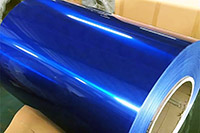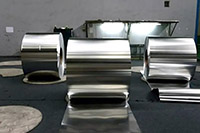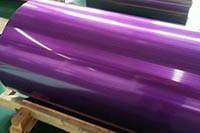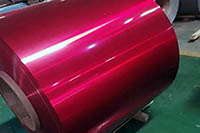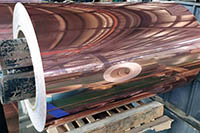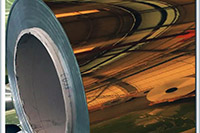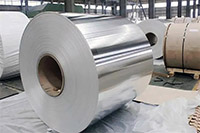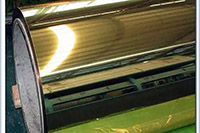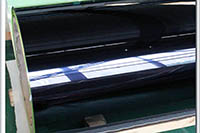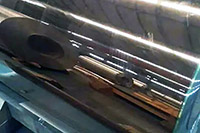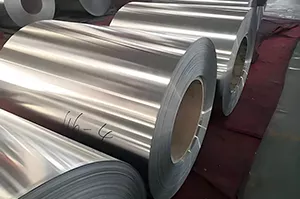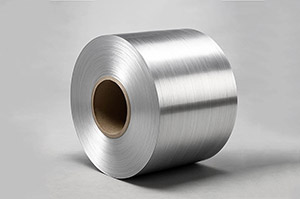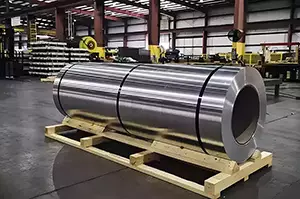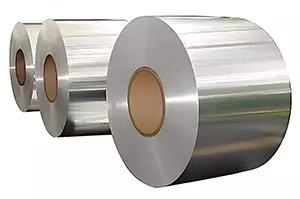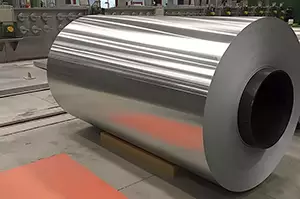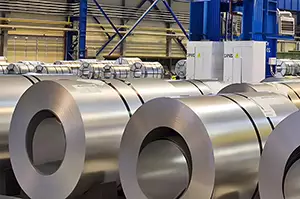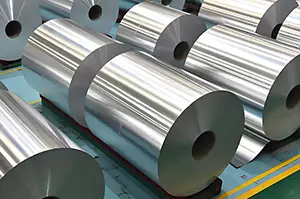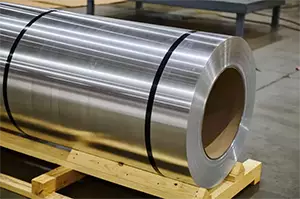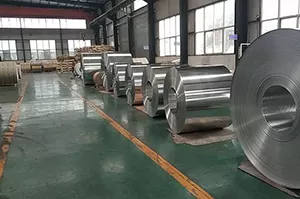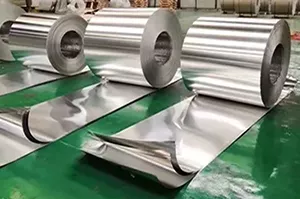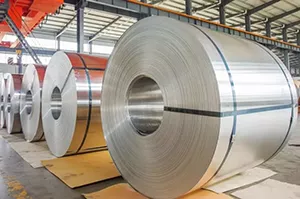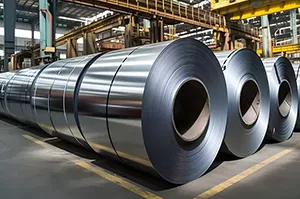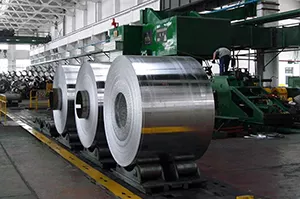3105 Aluminum Coil
3105 aluminum alloy coil, with its excellent strength, formability, corrosion resistance, and weldability, holds an important position in industries such as construction, transportation, electronics, home appliances, and advertising. Its multiple temper conditions make it suitable for applications requiring different strengths and processing needs, especially in external environments and demanding sheet metal working tasks.
3105 aluminum alloy is based on 98% pure aluminum, typically enhanced by adding small amounts of alloying elements such as copper, magnesium, manganese, and silicon to improve its strength. This alloy belongs to a non-heat-treatable, work-hardened category of aluminum alloys. While it cannot be hardened through heat treatment, it exhibits outstanding corrosion resistance, formability, and weldability, making it widely used across various fields.
3105 is a non-heat-treatable 3000 series wrought aluminum-manganese alloy (UNS A93015), offering higher strength than 1100 and 3003 alloys, and exhibiting excellent corrosion resistance, formability, weldability, and conductivity. 3105 aluminum coil is available in various tempers (O, H12, H14, H16, H18, H24, H26, H28) and thicknesses, with surface treatments suitable for construction, waterproofing sheets, and general sheet metal applications.
- Series and UNS: Belongs to the 3000 series (manganese) wrought alloys; UNS A93015.
- Name meaning: "3" indicates Mn series, "1" denotes a variant of 3005, "05" specifies the particular alloy.
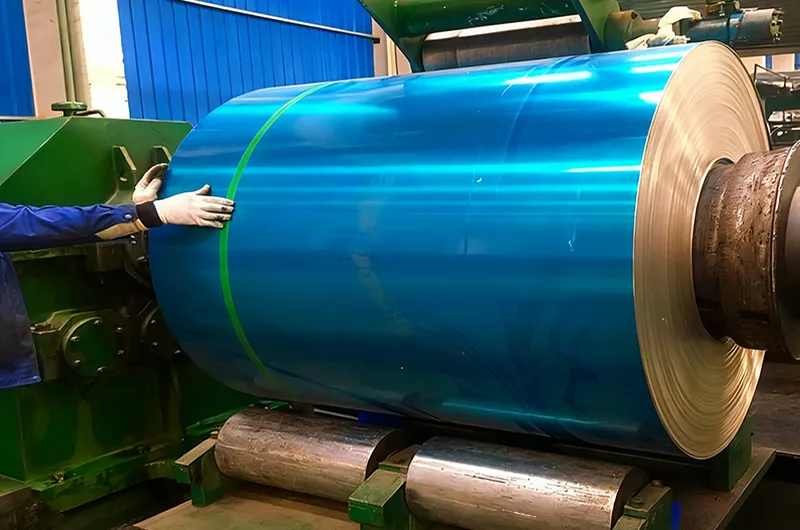
3105 Aluminum Coil Characteristics
- High Corrosion Resistance: 3105 aluminum alloy has excellent corrosion resistance, particularly suited for exposure in humid, salt-laden environments, such as marine conditions. Its surface naturally forms an oxide film, which further enhances its corrosion resistance.
- Good Formability: 3105 aluminum alloy has excellent formability, making it suitable for various forming processes. It can be processed through a variety of cold-working methods, including stamping and stretching, making it highly efficient during manufacturing and processing.
- Excellent Weldability: Due to its chemical composition, 3105 aluminum alloy offers good weldability, suitable for various aluminum welding techniques such as TIG welding and gas tungsten arc welding (GTAW).
- Good Strength: The strength of 3105 aluminum alloy is higher than that of 1100 and 3003 aluminum alloys. Although its strength is lower than some heat-treated aluminum alloys (such as 7075), it offers a good balance for applications requiring higher strength than 1000 series alloys.
- Workability: High plasticity in annealed condition, easily cold-formed, suitable for stamping, bending, and other processes. Strength increases after work hardening (e.g., H18 temper has higher hardness).
- Other properties: Excellent electrical and thermal conductivity, no brittleness at low temperatures, good sound absorption, resistant to nuclear radiation.
3105 Aluminum Coil Tempers
Common coil tempers:
O (annealed): Maximum ductility, suitable for deep drawing.
H12, H14, H16, H18, H24, H26, H28: Increased work-hardening levels (H28 is the highest), balancing strength and formability.
Common tempers for 3105 aluminum alloy include H14, H16, H18, H19, H22, H24, H111, H12, H25, H26, H28, and O, each representing different levels of work hardening and heat treatment states.
- H14, H16, H18, H19: These are semi-hardened or fully hardened states, suitable for applications requiring certain strength and formability.
- H22, H24: These have medium strength and are typically used for sheet metal processing requiring good formability and relatively high strength.
- H111: This is a special mark indicating a semi-hardened state, typically used in applications that require good ductility and crack resistance.
- H12, H25, H26, H28: These states also represent different levels of hardening, suitable for specific sheet metal processing and precision forming.
- O State: Fully annealed state, exhibiting the best ductility, suitable for manufacturing processes that require extremely high formability.
Technical Parameter of Specifications Of Alloy Aluminum Coil 3105
| Alloy | 3105 |
| Temper | O, H12, H14, H16H18, H19, H22, H24, H26, H28, H32, H34, H36, H38 |
| Thickness(mm) | 0.2-8.0 |
| Width(mm) | 100-2650 |
| Length(mm) | c |
3105 Aluminum Coil Surface Treatments and Finishes
- 3105 Anodized Aluminum Coil Surface treated by anodizing, forming a dense oxide film with excellent corrosion resistance, wear resistance, and decorative effect; widely used in building facades, roof decoration, appliance shells, and premium decorative materials.
- 3105 Coated Aluminum Coil Coated with organic or inorganic protective layers to enhance weather resistance and aesthetics; commonly used for roofing sheets, curtain wall panels, billboards, and indoor/outdoor decoration.
- 3105 Polished Mirror Aluminum Coil Processed by mechanical or chemical polishing to achieve a mirror-like bright surface with high reflectivity and decorative effect; maintains the alloy’s corrosion resistance and formability while greatly enhancing visual appeal.
- 3105 Laminated Aluminum Coil Surface laminated with plastic film, paper, or color film for better moisture resistance, wear resistance, and decorative performance; widely applied in packaging, appliance exteriors, and interior building materials.
- 3105 Brushed Aluminum Coil Surface treated with brushing process to create a unique metallic texture and decorative effect; often used in appliance panels, electronic housings, furniture decoration, and interior trims.
- 3105 Embossed Aluminum Coil Surface embossed with patterns such as orange peel, diamond, or dots to improve anti-slip properties and aesthetics; commonly used in refrigerators, air conditioners, flooring, and anti-slip panels.
- 3105 Mill Finish Aluminum Coil Natural rolled aluminum surface without extra treatment, retaining metallic luster; typically used in industrial processing, car body linings, packaging, and further fabrication.
- 3105 Painted Aluminum Coil Painted or roller-coated with various colors for weather resistance and decorative appeal; mainly applied to roofing, wall panels, ceilings, and signage.
- 3105 Pre-Coated Aluminum Coil Factory-finished with coating, ready for direct use, reducing additional processing steps; widely used in building decoration, appliance panels, roofing, and exterior walls.
- 3105 Pre-Painted Aluminum Coil Pre-applied with multiple organic coatings, offering excellent corrosion resistance and color retention; suitable for curtain walls, automotive decoration, and signage panels.
- 3105 PVC Coated Aluminum Coil Laminated with PVC protective film, providing scratch resistance, corrosion resistance, and waterproof performance; commonly used in doors, windows, furniture, decorative panels, and electrical housings.
- 3105 Stucco Embossed Aluminum Coil Surface with stucco-like or orange peel embossed texture, offering enhanced strength, slip resistance, and aesthetics; widely applied in cold storage, refrigerators, air duct cladding, and roofing interiors.
- 3105 Textured Aluminum Coil Special textured surface treatment provides unique visual effect, decorative appeal, and improved scratch resistance; often used in decorative panels, signage, and interior design.
- 3105 Wood Aluminum Coil Surface finished with heat transfer printing or film lamination to present natural wood grain appearance, combining metallic strength with wood aesthetics; widely used in curtain walls, interior decoration, furniture, and doors/windows.
3105 Aluminum Coil Color Options
3105 Aluminum Coil Standards
- ASTM B209: Sheet and plate.
- EN 573-3 / EN 754-2: Europe chemical composition and mechanical testing.
- JIS H4000: Japanese standard for aluminum flat products.
3105 Aluminum Coil Formability and Workability
- Formability: O and H12-H14 tempers have excellent performance, suitable for deep drawing, bending, and roll forming.
- Weldability: Excellent in gas welding, arc welding, brazing, and resistance welding.
- Machinability: Fair, improved under high-temperature conditions.
- Cold work hardening: Achieved only through mechanical deformation (non-heat-treatable).
3105 Aluminum Coil Corrosion Resistance
Good corrosion resistance in atmospheric and mild marine environments; better oxidation and weather resistance than 1100 or 3003 alloys.
Popular 3105Aluminum Coil Sizes and Specifications
| Item | Thickness (inch) | Width (inch) | Temper |
| 3105 Aluminum Coil 0.019″ x 24″ | 0.019″ | 24″ | H14, H16, H18, H24, H26 |
| 3105 Aluminum Coil 0.019″ x 36″ | 0.019″ | 36″ | H14, H16, H18, H24, H26 |
| 3105 Aluminum Coil 0.019″ x 48″ | 0.019″ | 48″ | H14, H16, H18, H24, H26 |
| 3105 Aluminum Coil 0.019″ x 60″ | 0.019″ | 60″ | H14, H16, H18, H24, H26 |
| 3105 Aluminum Coil 0.024″ x 24″ | 0.024″ | 24″ | H14, H16, H18, H24, H26 |
| 3105 Aluminum Coil 0.024″ x 36″ | 0.024″ | 36″ | H14, H16, H18, H24, H26 |
| 3105 Aluminum Coil 0.024″ x 48″ | 0.024″ | 48″ | H14, H16, H18, H24, H26 |
| 3105 Aluminum Coil 0.024″ x 60″ | 0.024″ | 60″ | H14, H16, H18, H24, H26 |
| 3105 Aluminum Coil 0.027″ x 24″ | 0.027″ | 24″ | H14, H16, H18, H24, H26 |
| 3105 Aluminum Coil 0.027″ x 36″ | 0.027″ | 36″ | H14, H16, H18, H24, H26 |
| 3105 Aluminum Coil 0.027″ x 48″ | 0.027″ | 48″ | H14, H16, H18, H24, H26 |
| 3105 Aluminum Coil 0.027″ x 60″ | 0.027″ | 60″ | H14, H16, H18, H24, H26 |
| 3105 Aluminum Coil 0.032″ x 24″ | 0.032″ | 24″ | H14, H16, H18, H24, H26 |
| 3105 Aluminum Coil 0.032″ x 36″ | 0.032″ | 36″ | H14, H16, H18, H24, H26 |
| 3105 Aluminum Coil 0.032″ x 48″ | 0.032″ | 48″ | H14, H16, H18, H24, H26 |
| 3105 Aluminum Coil 0.032″ x 60″ | 0.032″ | 60″ | H14, H16, H18, H24, H26 |
| 3105 Aluminum Coil 0.036″ x 24″ | 0.036″ | 24″ | H14, H16, H18, H24, H26 |
| 3105 Aluminum Coil 0.036″ x 36″ | 0.036″ | 36″ | H14, H16, H18, H24, H26 |
| 3105 Aluminum Coil 0.036″ x 48″ | 0.036″ | 48″ | H14, H16, H18, H24, H26 |
| 3105 Aluminum Coil 0.036″ x 60″ | 0.036″ | 60″ | H14, H16, H18, H24, H26 |
| 3105 Aluminum Coil 0.040″ x 24″ | 0.040″ | 24″ | H14, H16, H18, H24, H26 |
| 3105 Aluminum Coil 0.040″ x 36″ | 0.040″ | 36″ | H14, H16, H18, H24, H26 |
| 3105 Aluminum Coil 0.040″ x 48″ | 0.040″ | 48″ | H14, H16, H18, H24, H26 |
| 3105 Aluminum Coil 0.040″ x 60″ | 0.040″ | 60″ | H14, H16, H18, H24, H26 |
| 3105 Aluminum Coil 0.050″ x 24″ | 0.050″ | 24″ | H14, H16, H18, H24, H26 |
| 3105 Aluminum Coil 0.050″ x 36″ | 0.050″ | 36″ | H14, H16, H18, H24, H26 |
| 3105 Aluminum Coil 0.050″ x 48″ | 0.050″ | 48″ | H14, H16, H18, H24, H26 |
| 3105 Aluminum Coil 0.050″ x 60″ | 0.050″ | 60″ | H14, H16, H18, H24, H26 |
| 3105 Aluminum Coil 0.063″ x 24″ | 0.063″ | 24″ | H14, H16, H18, H24, H26 |
| 3105 Aluminum Coil 0.063″ x 36″ | 0.063″ | 36″ | H14, H16, H18, H24, H26 |
| 3105 Aluminum Coil 0.063″ x 48″ | 0.063″ | 48″ | H14, H16, H18, H24, H26 |
| 3105 Aluminum Coil 0.063″ x 60″ | 0.063″ | 60″ | H14, H16, H18, H24, H26 |
| 3105 Aluminum Coil 0.080″ x 24″ | 0.080″ | 24″ | H14, H24 |
| 3105 Aluminum Coil 0.080″ x 36″ | 0.080″ | 36″ | H14, H24 |
| 3105 Aluminum Coil 0.080″ x 48″ | 0.080″ | 48″ | H14, H24 |
| 3105 Aluminum Coil 0.080″ x 60″ | 0.080″ | 60″ | H14, H24 |
| 3105 Aluminum Coil 0.090″ x 24″ | 0.090″ | 24″ | H14, H24 |
| 3105 Aluminum Coil 0.090″ x 36″ | 0.090″ | 36″ | H14, H24 |
| 3105 Aluminum Coil 0.090″ x 48″ | 0.090″ | 48″ | H14, H24 |
| 3105 Aluminum Coil 0.090″ x 60″ | 0.090″ | 60″ | H14, H24 |
| 3105 Aluminum Coil 0.100″ x 24″ | 0.100″ | 24″ | H14, H24 |
| 3105 Aluminum Coil 0.100″ x 36″ | 0.100″ | 36″ | H14, H24 |
| 3105 Aluminum Coil 0.100″ x 48″ | 0.100″ | 48″ | H14, H24 |
| 3105 Aluminum Coil 0.100″ x 60″ | 0.100″ | 60″ | H14, H24 |
3105 Aluminum Coil Applications
| Application Field | Specific Uses |
| Construction | Building waterproofing sheets and roofing systems: gutters, downspouts, trim strips, exterior wall cladding |
| General Sheet Metal Processing | Piping systems, cabinet fabrication, industrial or commercial panels |
| Pre-painted Aluminum Coils | Building curtain walls, signage, interior decorative panels, and other color-coated aluminum applications |
| HVAC and Cladding | Complex duct and profile cladding, suitable for air conditioning system housings, air ducts, etc. |
| Transportation Industry | Automotive body panels, truck compartment covers, liquid transport tanks (e.g., milk tanks, oil tanks) |
| Consumer Goods Sector | Kitchen utensils (e.g., rice cookers, cookware), washing machine housings, food storage containers |
| Industrial Applications | Heat exchangers, pressure vessels, housings and components of chemical processing equipment |
| Electrical Applications | Electrical conductive components, radiators (utilizing its good electrical and thermal conductivity) |
| Packaging Industry | Wine bottle caps (good sealing, strong anti-counterfeiting), cake trays (high-temperature resistant, uniform heat conduction) |
- General Sheet Metal Processing: Due to its excellent formability, 3105 aluminum alloy is widely used in general sheet metal processing, particularly in applications requiring higher strength than 1000 series aluminum alloys.
- Residential Exterior Walls: The high strength and corrosion resistance of 3105 aluminum coil make it an ideal material for exterior cladding of residential buildings, particularly in areas exposed to atmospheric conditions.
- Mobile Homes: Due to its corrosion resistance and ease of forming, 3105 aluminum alloy is widely used in the external structures, bodywork, and accessories of mobile homes.
- Signage Production: 3105 aluminum coil, with its excellent surface coating properties and processability, is suitable for making various signs and billboards, especially outdoor advertisements that require UV and corrosion resistance.
- Vehicle and Aircraft Components: Due to its relatively high strength, 3105 aluminum coil is also used in certain lightweight vehicle body parts and aircraft components that require higher strength.
-
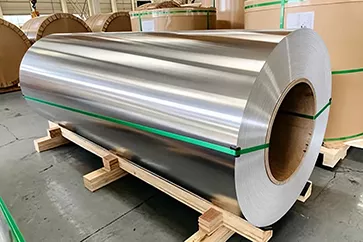
3105 Aluminum Coil for Residential Exterior Walls
-
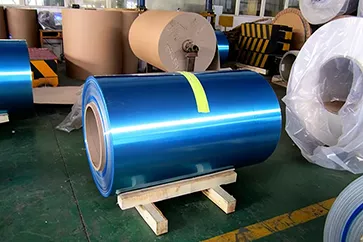
3105 Aluminum Coil for Mobile Homes
-
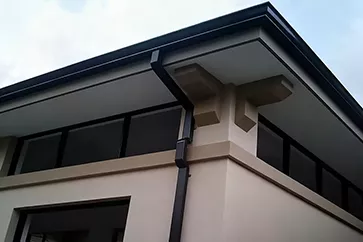
3105 Aluminum Coil for Rainwater Gutters and Drainage Systems
-
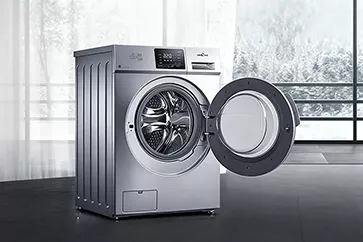
3105 Aluminum Coil for Household Appliances
-
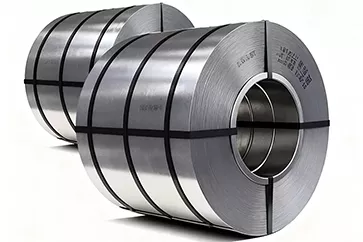
3105 Aluminum Coil for Food Storage Equipment
-
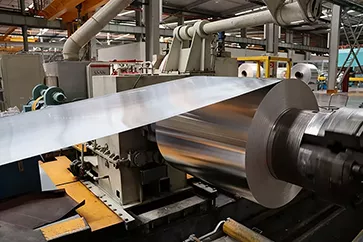
3105 Aluminum Coil for Transport Tanks
-

3105 Aluminum Coil for Pipe Insulation
-
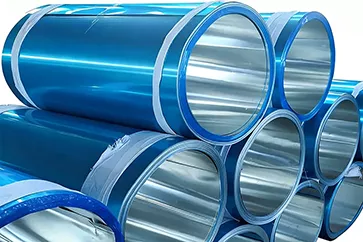
3105 Aluminum Coil for Kitchen Utensils
-

3105 Aluminum Coil for Bottle Caps
-

3105 Aluminum Coil for Decorative Items
Comparison of 3105 Aluminum with Other Alloys
- Compared to 3003: Due to the addition of magnesium and titanium, it has higher strength and better fatigue resistance.
- Compared to 5052: Lower corrosion resistance, but more cost-effective for non-marine applications.
- Compared to 6061: Better formability, but lower strength; 6061 is heat-treatable.
Workability and Limitations of 3105 Aluminum Coil
- Formability: Excellent performance in annealed (O) condition, suitable for bending and stamping.
- Weldability: Compatible with TIG, MIG, and resistance welding.
- Machinability: Due to the soft texture in annealed condition, lubricants are required during machining.
- Limitations: Not heat-treatable; strength can only be improved through cold working.
Haomei 3105 Aluminum Coil Standards and Supply Information
- Standards: ASTM B209, ASME SB209, EN 485-2.
- Tempers: Available in O, H12-H28, and painted/pre-coated versions.
- Dimensions: Thickness ranges from 0.2 mm to 8.0 mm, with widths up to 2650 mm.
3105 Aluminum Coil Production Process
- Manufactured through processes such as cast rolling, hot rolling, cold rolling, and annealing; surface treatments include anodizing, painting, and wood/marble grain printing.
- Surface is flat with no composite high-temperature indentations, and remains undeformed after shearing.
3105 Aluminum Coil Chemical Composition
| Element | 3105 |
| Silicon | 0.6 |
| Iron | 0.7 |
| Copper | 0.30 |
| Manganese | 0.30-0.8 |
| Magnesium | 0.20-0.8 |
| Chromium | 0.20 |
| Zinc | 0.40 |
| Titanium | 0.10 |
| Aluminum | balance |
| Other Elements (each) | 0.05 |
| Other Elements (total) | 0.15 |
3105 Aluminum Mechanical Properties
Mechanical property requirements for strain hardened H12 temper (¼ hard) as specified in ASTM B209 and ASME SB209
| Thickness (inch) | Yield Strength Min. (ksi) | Tensile Strength (ksi) | Elongation (%) Min. | |
| Min. | Max. | |||
| 0.017 – 0.019 | 15.0 | 19.0 | 26.0 | 1 |
| 0.020 – 0.031 | 15.0 | 19.0 | 26.0 | 1 |
| 0.032 – 0.050 | 15.0 | 19.0 | 26.0 | 2 |
| 0.051 – 0.080 | 15.0 | 19.0 | 26.0 | 3 |
Mechanical property requirements for strain hardened H14 temper (½ hard) as specified in ASTM B209 and ASME SB209
| Thickness (inch) | Yield Strength Min. (ksi) | Tensile Strength (ksi) | Elongation (%) Min. | |
| Min. | Max. | |||
| 0.017 – 0.019 | 18.0 | 22.0 | 29.0 | 1 |
| 0.020 – 0.031 | 18.0 | 22.0 | 29.0 | 1 |
| 0.032 – 0.050 | 18.0 | 22.0 | 29.0 | 2 |
| 0.051 – 0.080 | 18.0 | 22.0 | 29.0 | 2 |
Physical Properties for Aluminim 3105
| Property | 3105 Data |
| Density, lb/in3 | 0.0983 |
| Modulus of Elasticity, psi | 10.0 x 106 |
| Coefficient of Thermal Expansion, 68-212˚F, /˚F | 12.1 x 10-6 |
| Thermal Conductivity, Btu/ft hr ˚F | 99 |
| Specific Heat, Btu/lb ˚F | 0.214 |
| Electrical Resistivity, Microohm-in | 1.504 |
Explore Different Aluminum Coil Grades
Further reading
- 3105 Aluminum Plate Sheet
- 3105 h14 aluminum sheet plate
- 3105 h24 aluminum sheet plate
- 3105 painted aluminum sheet
Users viewing this material also viewed the following
- 3105 Coated Aluminum Coils
- 3105 Aluminum Coil for Venetian Blinds
- 3105 Aluminum for Beverage Cans
- 3105 Aluminum for Bottle Caps
- 3105 Aluminum for Wine Bottle Caps
- 3105 Aluminum for Roofing Panels
- 3105 Corrugated Aluminum Sheet
- 3105 Aluminum for Lamp Holders
Recommended Content

